Taq Kasra: World's Largest Single-Span Brick Vault
Throughout history, the significance of many old buildings lies in their construction, achieved without the modern facilities and technologies we have today.
Iran has a wealth of such remarkable structures. Among them, Taq Kasra, a remnant of a Sasanian-era Persian monument has caught the attention of archaeologists and enthusiasts alike.
Also known as Ayvān-e Kasrā or Ivan Mada'in or the Archway of Ctesiphon, Taq Kasra is the only surviving structure of the ancient Persian capital of Ctesiphon and is located in present-day Iraq.
This magnificent archway was the facade of the main palace in Ctesiphon and is the second-largest single-span vault of unreinforced brickwork after Gavmishan Bridge globally.
Stay tuned to get more familiar with this historical monument and explore its architectural wonders.
About Taq Kasra
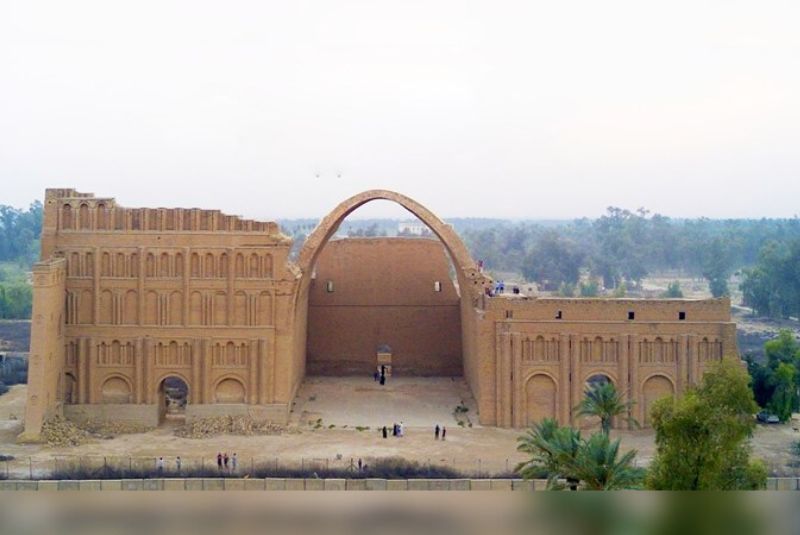
Taq-e kasra, also known as Ayvan Kasra, Ivan Khosrow, or Ivan Mada'en is considered one of the most valuable remnants from the time of Sassanid rule and the second-largest single-span brick vault arch in the world today.
Taq Kasra was an integral part of a vast royal palace estimated to have measured about 365 by 275 meters in the ancient city of Ctesiphon, which served as the royal capital of the Persian Empire during the Parthian and Sasanian periods.
The archway is believed to serve as the ceiling of the throne room or a grand portico. It rises to an impressive height of 37 meters, with a thickness of 1 meter at the apex and 7 meters at its base.
While there is some debate about its exact construction date, it is believed to have been constructed during the reign of Shapur I. Some archaeologists attribute the building's origins to the Parthian period, it is widely accepted that it was expanded, rebuilt, and developed during the time of Sassanid rule, particularly under the reign of Anoushirvan Dadgar.
Unfortunately, after the Arab invasion of Iran, both The Kasra arch and Palace suffered significant damage, with large portions being destroyed.
The archway underwent partial restoration under Saddam Hussein in the 1980s, but the Gulf War interrupted further progress. Although restoration efforts resumed and were completed in 2017, a section of the arch collapsed just two years later.
| Related: Sassanid Empire - Rise and Fall of the Sasanians
Taq Kasra Meaning
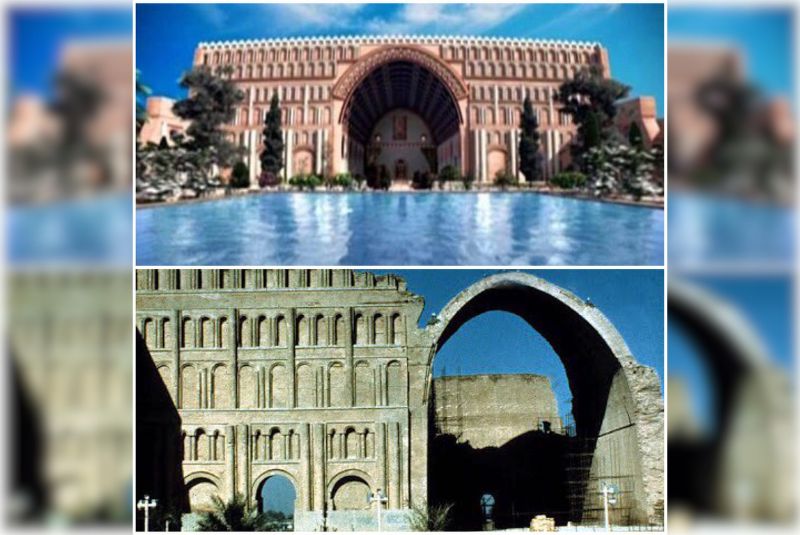
Taq Kasra is known by various names such as Taq-e Kasra, Ivan Mada'in, Ivan Kasra, and Ivan Khosrow meaning "the Iwan of Khosrow."
The term "Taq" translates to "arch," while "Kasra" is an Arabic word. The Arabs called the Sasanian kings Kasra, which is why this palace is also called the Kasra palace maning the palace of the Sasanian kings or the palace built by a Sasanian king.
| Read more: Persian Empire - Facts & History of Achaemenids
Taq Kasra History
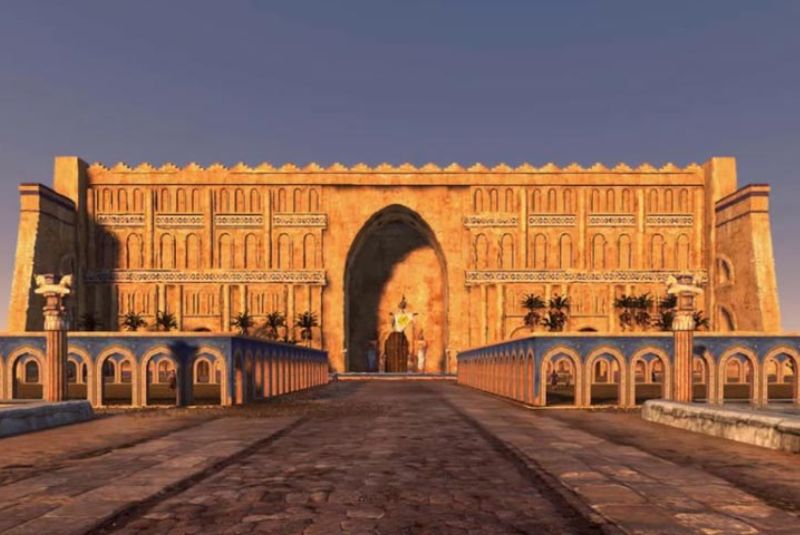
Taq Kasra, also known as the Arch of Ctesiphon, has a rich and diverse history spanning different eras. Its exact construction date remains uncertain, with some historians attributing it to the reign of Shapur I in the Sasanian era (242-272 CE), while others believe it may have been built during the reign of Anushiruwan the Just (Khosrow I) in 540 CE after a campaign against the Byzantines.
During the Arab-Muslim period, the archway was captured by the Arabs in 637 CE during the conquest of Persia. It served as a mosque for a period of time until the area was gradually abandoned. In the 10th century, the Abbasid caliph al-Muktafi dismantled the ruins of the palace to reuse its bricks in the construction of the Taj Palace in Baghdad.
The significance of Taq Kasra was also recognized by many famous personalities including the poet Khaqani, who visited the ruins in the 12th century and wrote a poem about it. In the Victorian era, the French artist Eugène Flandin studied the structure in 1851 and remarked on its uniqueness compared to Roman architecture.
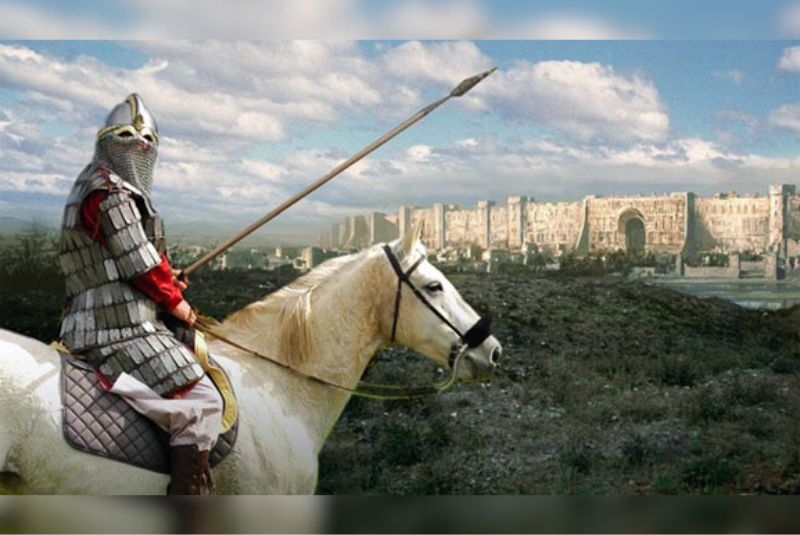
Over the centuries, Taq Kasra faced numerous challenges. It suffered damage from a serious flood in 1888 and underwent restoration efforts under Saddam Hussein's government in the 1980s. However, restoration was interrupted by the 1991 Persian Gulf War. In recent years, the Iraqi government, in collaboration with international partners, has made efforts to restore the site. The restoration was completed in 2017, only to be followed by a partial collapse in 2019.
As of January 2021, restoration plans were being discussed, with an estimated cost of $600,000. Despite its tumultuous history, Taq Kasra is still a wonder of architecture today and continues to captivate visitors with its grandeur and architectural significance.
| Discover: Iran UNESCO World Heritage Sites
Who Built the Arch of Ctesiphon?
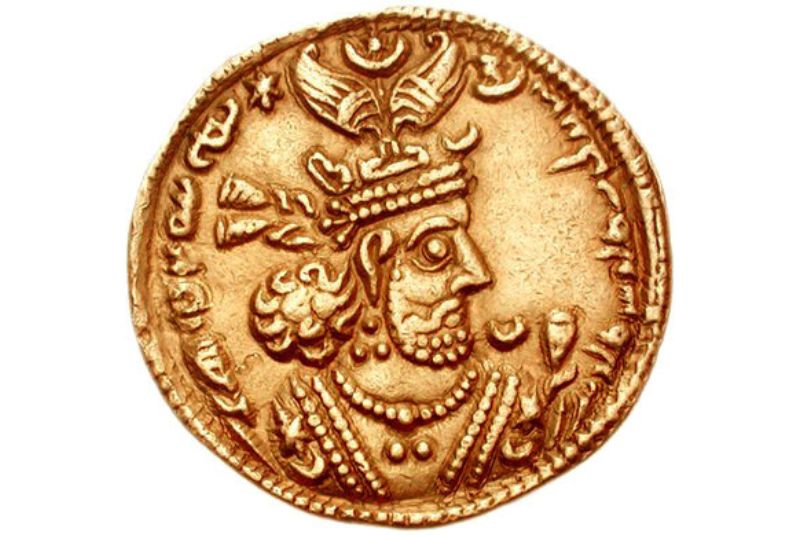
In Ferdowsi's Shahnameh there is a story that depicts the construction of Taq Kasra. According to the story, Khosrow Parviz, the renowned Sassanid king, sought to build a magnificent palace to show the power of his government that would surprise everyone, so he decided to appoint the best-skilled architects to build it.
He invited architects and workers from far and wide to showcase their skills. While some versions attribute the construction to Shapur I, the chosen architect in this tale is King Furqan.
After King Khosrow Parviz's call, many workers volunteered to build the building of the king's interest, and ultimately he selected three of these architects.
Among them was Furqan, a remarkable architect known for his expertise in constructing grand structures. The king gave conditions that the walls should be about 10 meters wide and over 30 meters long.
After accepting the King's conditions, they began to build the palace and Ivan Kasra. The walls of the palace were about 10 meters wide and Furqan ensured the foundations were deeply dug. After the walls were built, Forqan wanted to wait 40 days for a possible wall meeting and then continue building the palace, but Khosrow Parviz refused. Furqan then asked the king to measure the height of the walls and then disappeared overnight.
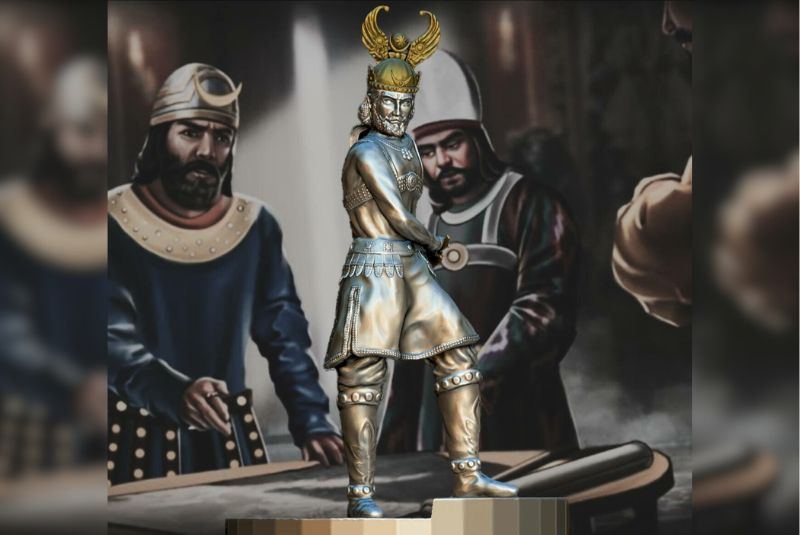
The king, upon discovering Furqan's absence, ordered his agents' imprisonment. Three years passed without any knowledge of Furqan's whereabouts until he reappeared before Khosrow Parviz. The king, furious at his absence, demanded an explanation. Furqan replied to the king that before punishing me, let us measure the height of the walls again. The walls of the half-built palace were re-sized and to everyone's surprise, the walls had magically shortened by about five Roche (approximately two meters).
At this point, Furqan turned and said:
If I had finished building this palace three years ago, there would be no walls and palaces today.
King Khosrow Parviz was impressed by Furqan's knowledge and skills and allowed him to finish the construction work.
The completion of the palace and the arch took an additional seven years. In the building of this palace, many precious stones were used that gave the archway a mesmerizing and radiant appearance. Taq Kasra is a wonder of architecture and the engineering skills and construction practices employed in this grand structure continue to captivate architectural enthusiasts worldwide.
| Read more: Cyrus The Great – The Most Powerful King in The World
Architecture of Taq Kasra
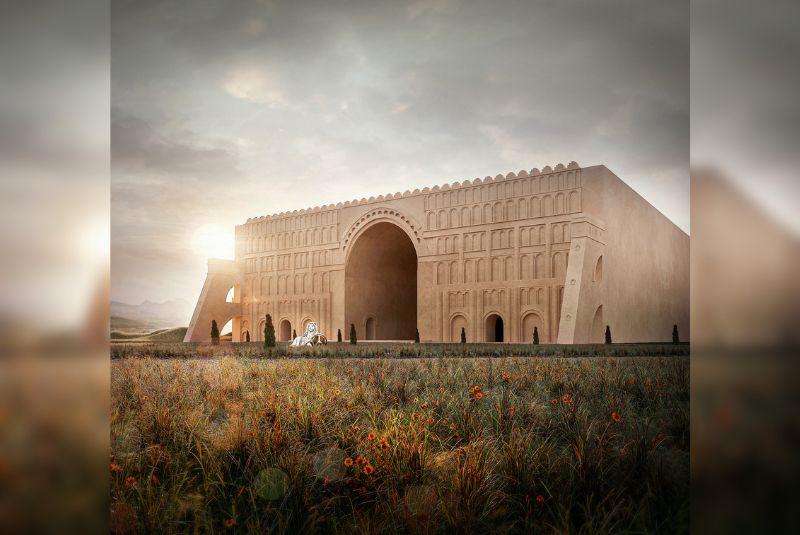
The Taq Kasra in Ctesiphon is one of the best examples of architecture from the time of the Sassanid rule. The Taq Kasra's roof vault stands as the tallest of its kind in the world.
While much of the monument has been lost to time, modern engineers have been able to reconstruct the arch and palace building using advanced software. Today, only the entrance of the palace and the Taq Kasra itself remain, and even these are at risk of collapse.
It was built using only bricks and plaster without advanced tools and machinery. The architectural style reflects influences from various civilizations, including Parthian, Greek, Roman, and Syrian.
The dimensions of the arch of Ctesiphon are truly impressive, with an overall size of 25 meters. The palace's walls boast a width of 10 meters and a length of over 30 meters.
The Kasra palace consisted of three rows of rooms, featuring spacious front and rear rooms with middle rooms serving as connecting corridors.
During the construction of Ivan Madaen, the use of arches at the entrances of large structures was a common practice. The scarcity of wood resources in Iran led to the development of innovative techniques, with arched rings replacing wooden molds.
The arches, with their distinctive oval shape, were constructed by placing the arched rings at an angle and filling the gaps between them with mortar. The residential units extended across the entire width of the building, culminating in four-eared rooms that likely had domed roofs.
To make the arches more stable, they built strong walls with as much width as possible, and as much as possible avoided additional holes and windows in these walls; therefore, the entrance corridors of buildings like this are dark.
Within the arch shell and the lower part of the arch, thick clay tubes were present, possibly used for hanging lamps. The interior walls of the palace boasted exquisite decorations, including colored marble and glass mosaics depicting scenes from Khosrow's battles.
The flooring was adorned with marble, complemented by luxurious carpets. Gypsum played a crucial role in the building's embellishment, with remnants of statues, floral motifs, and animal sculptures crafted from plaster and gypsum.
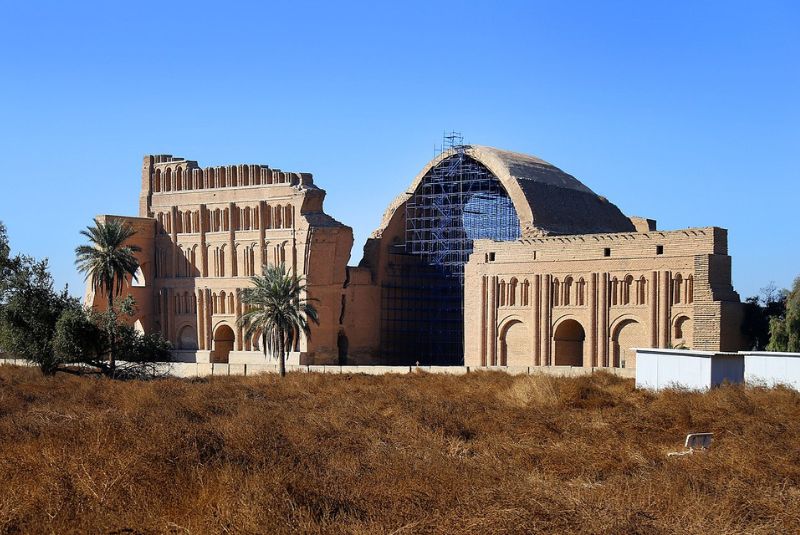
In general, the architecture of the Arch Kasra is one of the most valuable architectural examples of ancient Iran. During the time of the Sassanid rule, it was also a very important place for holding special ceremonies and celebrations. A famous Iranian carpet called "Baharestan" was also located in this palace.
Over the years, the influence of the Taq Kasra has extended beyond its time, inspiring architects to create magnificent structures based on its design. For instance, the Arch of the Museum of Ancient Persia, designed by the renowned French architect André Godard, draws inspiration from Ivan Mada'in. Another example is the entrance to the University of Tehran, created by Mohsen Moghaddam, a prominent archaeologist and professor.
| Suggestion: Pasargadae - Legacy of Cyrus the Great & Ancient City
Taq Kasra Location
Taq Kasra was originally part of the city of Ctesiphon which served as the royal capital of the Persian Empire (Iranian Empire) during the Parthian and Sasanian periods. Over the course of history, many regions once under the rule of ancient Persian kings were eventually separated from Iranian territory.
Currently, Taq Kasra falls within the village of Mada'in in the Diyala province of Iraq. It is located approximately 40 km southeast of the city of Baghdad, on the eastern bank of the Tigris River.
| Discover: Persepolis - The Great Ancient Persian Capital
Facts About Taq kasra
- Taq Kasra was originally located in the ancient Persian capital of Ctesiphon
- It is the second-largest single-span brick vault arch in the world today.
- It is located approximately 40 km southeast of the city of Baghdad, Iraq
Bottom Line
Taq kasra is the only remnant from the ancient Persian capital of Ctesiphon that served as the royal capital of the Persian Empire during the Parthian and Sasanian periods. It is the second-largest single-span brick vault arch in the world today.
It was an integral part of a vast royal palace. Some historians believe it was built during the Sasanian era while others believe it may have been built during the reign of Anushiruwan.
Although Taq Kasra has suffered damage over the centuries, it remains a remarkable architectural wonder that continues to captivate visitors.
Share your story!
Comment below and let us know about your Experience.
Your story inspires others!


Comment
Leave a Comment